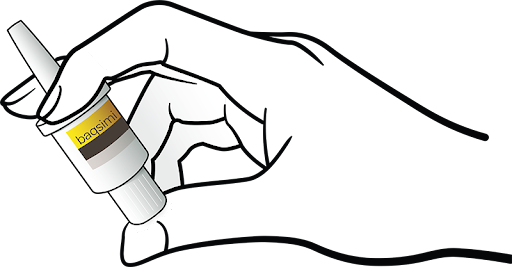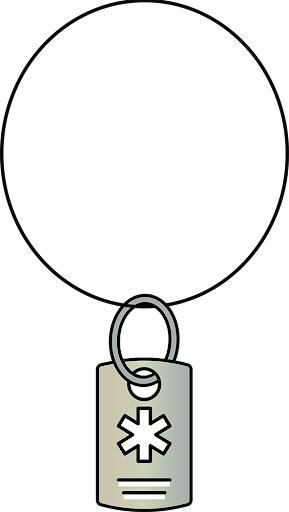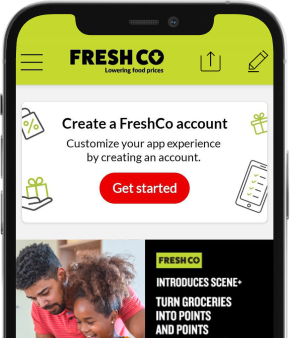Treatment for severe hypoglycemia
- If you have diabetes, low blood glucose can quickly become an emergency. It’s important to act quickly.
- This step-by-step approach explains exactly what you need to do, and how others can help.
- Knowing what triggers low blood glucose can help you to avoid it.
Danielle has been working in the garden for a few hours when she starts to sweat and feel nauseous. Her hands are trembling, and she suddenly feels very tired. Danielle goes inside and sits down at the kitchen table. Her partner Joe notices that she looks pale and asks if she is feeling okay. When Danielle tries to answer, her speech is slurred. Joe quickly gets Danielle’s blood glucose meter and helps her to check her blood glucose. When he sees that the reading is 2.7 mmol/L, he gets four glucose tablets (Dex4) for Danielle to take.
Danielle has just experienced common symptoms of low blood glucose, which is also called low blood sugar or hypoglycemia. Managing diabetes involves maintaining stable blood glucose. Keeping blood glucose levels close to normal helps prevent long-term complications, but can also increase the risk of having low blood glucose. Recognizing and treating symptoms of low blood glucose quickly is critical to preventing severe effects.
What is low blood glucose?
Low blood glucose occurs when the glucose level in the blood falls below 4.0 mmol/L. When this happens, the body is not supplied with the energy it needs.
Why does low blood glucose develop?
Changes in everyday activities are the most common cause of low blood glucose.
These changes may include:
- taking too much diabetes medication
- missing or delaying meals or snacks
- eating too little food
- increasing physical activity
- drinking alcohol without eating.
Is low blood glucose linked to taking certain medications?
If you use one or more of the following medications to treat diabetes, it is possible for your blood glucose to drop too low.
- insulin
- insulin combination medications (Xultophy or Soliqua)
- glyburide (Diabeta)
- gliclazide (Diamicron)
- glimepiride (Amaryl)
- repaglinide (GlucoNorm)
Keep in mind that taking a higher dose of these medications can also trigger low blood glucose.
It is unlikely that you will experience low blood glucose symptoms if you:
- manage your diabetes through diet and physical activity alone
- or only use other diabetes medications (in pill or injection form) that are not on this list.
Steps for treating low blood glucose
Step 1
If you have symptoms, check your blood glucose. A level of less than 4 mmol/L is too low. If it is not possible to check, treat your symptoms as if you have low blood glucose.
Step 2
Eat or drink 15 grams of fast-acting carbohydrate, such as one of the following:
- 4 Dex4 glucose tablets
- ¾ cup (175 mL) juice or regular soft drink
- 3 teaspoons (15 mL) of sugar dissolved in water
- 6 Life Savers
- 3 teaspoons (15 mL) of honey
If you take acarbose (Glucobay), your options to raise your low blood glucose level are more limited. As this medication slows down the absorption of other fast-acting carbohydrates, you must use glucose tablets or 1 cup plus 1/4 of a cup (313 mL) of skim milk.
Glucose (dextrose) tablets work faster than other type of treatment to raise the blood glucose level. Keep these tablets readily available at home, at work, and with you at all times.
Are you caring for a child who has diabetes? Your diabetes educator can recommend the amount of fast-acting carbohydrate to treat low blood glucose.
Step 3
Recheck your blood glucose after 15 minutes. If it is still below 4.0 mmol/L, treat again with another 15 grams of fast-acting carbohydrate.
Until your blood glucose rises above 4.0 mmol/L, do not eat or drink anything other than the fast-acting carbohydrate. Low blood glucose can cause anxiety that may make you feel like you need to eat more right away. However, if you eat too much, your blood glucose may become very high.
Step 4
Once your blood glucose level is above 4.0 mmol/L, have your normal meal or snack if it is planned within the hour. If your next meal is more than an hour away, eat a snack with 15 grams of carbohydrate and a protein source. For instance, have six crackers with peanut butter or cheese, or half of a meat, peanut butter or cheese sandwich. This should prevent low blood glucose before your next meal or snack.
Steps for Injecting Glucagon
Note: Training on how to give a glucagon injection is required.
- Follow the instructions included with the glucagon kit to mix the powder and the liquid.
- Draw the mixed fluid up into the syringe.
- Inject the glucagon into the outer mid-thigh, through clothing if necessary.
- Dispose of the syringe in an approved sharps container.
Steps for Using Glucagon Nasal Powder (Baqsimi)
- Remove the shrink wrap on package by pulling on the red stripe.
- Open the lid and remove the device from the tube.
- Hold the device between your fingers and thumb, being careful not to push the plunger.
- Insert the tip of the device gently into a nostril.
- Push the plunger firmly all the way in.
- When the green line on the device no longer shows, the full dose has been given.
Remove the tip from the nose and dispose of the used device and tube.

How can I prevent low blood glucose?
- Learn how medication, food, and physical activity affect your blood glucose levels. Regular blood glucose checks can help you keep it under control. Staying aware of your blood glucose level allows you to adjust the amount of food and physical activity you get.
- Eat regular meals and snacks. Eat enough at each meal, and try not to skip or delay eating.
- To prevent low blood glucose on sick days, you must keep eating and drinking foods that contain carbohydrate. Talk to your diabetes educator about what to eat on days when you are not well.
- If you are more physically active than usual, be aware that low blood glucose can happen. Check your blood glucose level more often, and eat more food as needed.
- Always carry a fast-acting carbohydrate with you. Glucose tablets are not expensive and are easy to bring along. Pick up a few packages from your pharmacy and replace your supply as you use them.
Symptoms of low blood glucose
Although not everyone experiences the same thing, these are some of the signs of low blood glucose:
- fatigue
- dizziness
- confusion
- anxiety
- hunger
- weakness
- sweating
- trembling
- rapid heartbeat
- tingling or numb lips
A medical alert bracelet or other medical ID jewellery can speak for you when you are ill or unconscious, alerting others that you have diabetes.

What is the emergency treatment for low blood glucose?
Talk to those who might need to help you in an emergency. Low blood glucose can cause confusion, and you may not be able to treat yourself. Describe the symptoms to family, friends, and coworkers. Tell them how they can help. Educate them on how to use glucagon. Show them where you keep your emergency supplies. Explain that having low blood glucose may make you act as if you were drunk. Quick identification and treatment can prevent mild low blood glucose from becoming more serious. Very low blood glucose levels can cause unconsciousness or seizures.
Knowing the signs of low blood glucose helps to keep you safe as you try to achieve good blood glucose control. It is important to notice and quickly treat low blood glucose to stop it from becoming more serious. If you have concerns about low blood glucose, and especially if you are experiencing frequent episodes, consult your doctor, diabetes educator, or pharmacist.
Emergency treatment for severely low blood glucose
If someone is unable to swallow or becomes unconscious because of severely low blood glucose, immediate emergency aid is needed.
Treat the person immediately with glucagon. This hormone is used to treat severely low blood glucose. In Canada, it is available as a powder that can be used in two ways. It can be inserted into the nose (and does not need to be inhaled to work) or injected into the thigh, upper arm or buttock. Either form quickly raises the blood glucose level of someone who is unconscious.
As glucagon can cause nausea and vomiting, turn the unconscious person on their left side after the glucagon is given.
Call 911 or emergency assistance.
Once the person becomes alert and can swallow, a fast-acting carbohydrate should be given.
WRITTEN BY: Rami Chowaniec, BSc. Pharm, CDE, a pharmacist at Southgate Safeway in Edmonton, Alberta.

